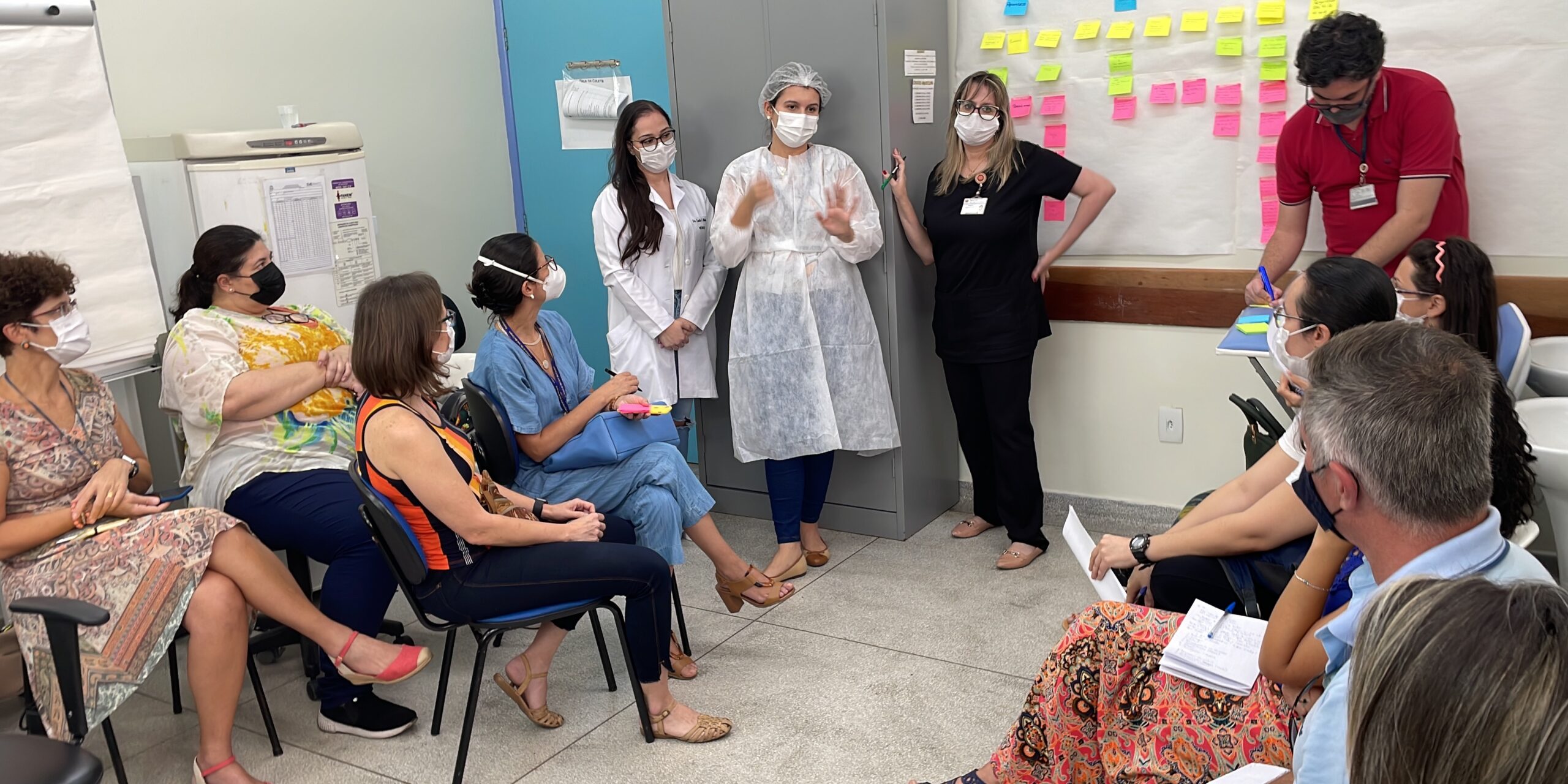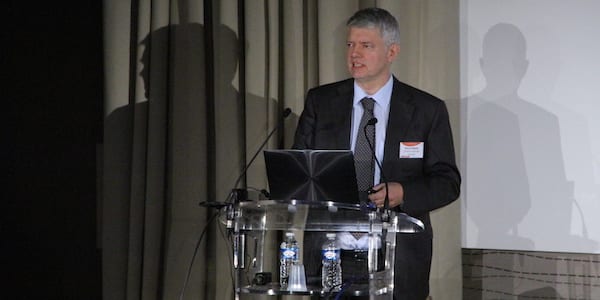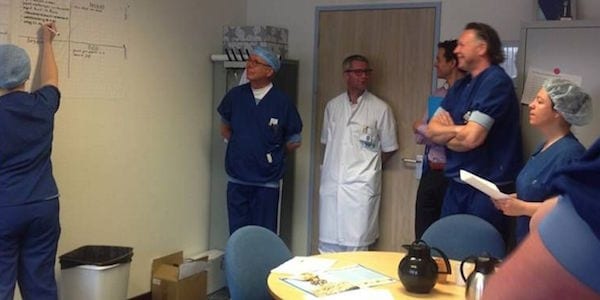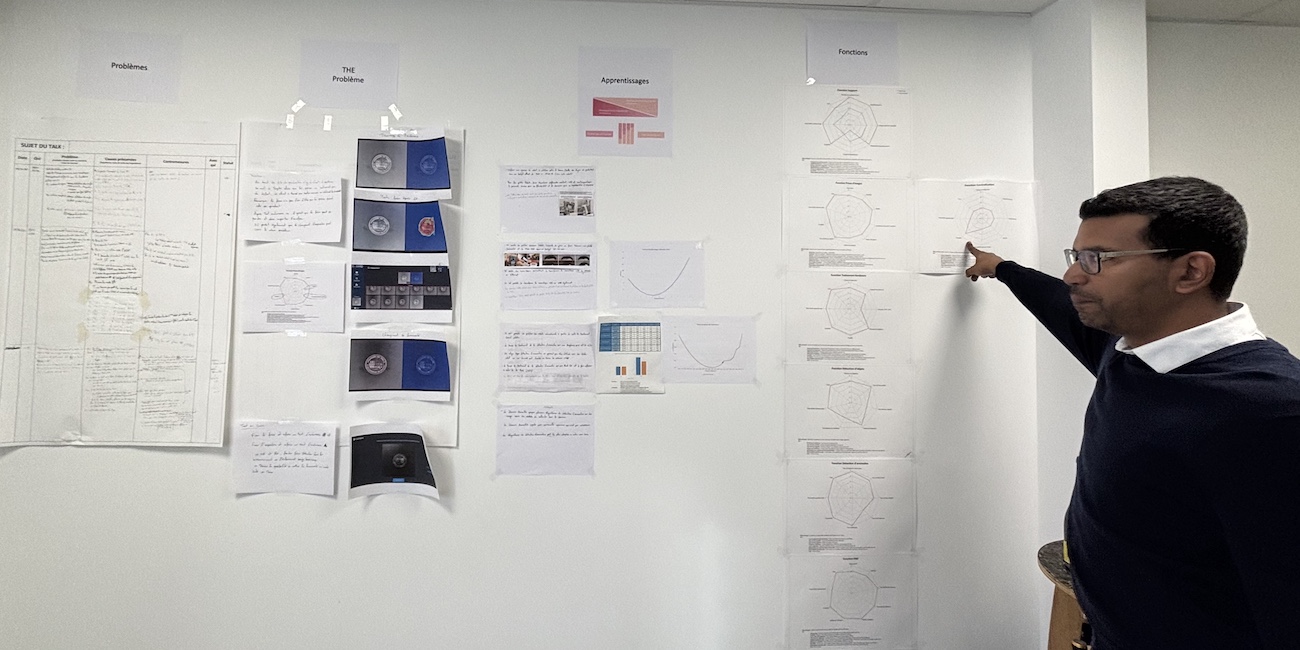
Creating a model primary care unit
CASE STUDY – This primary care unit in Brazil is hoping to become a model for other units in their system. Take note, this is how Lean Thinking can spread across healthcare systems.
Words: The CSJ primary care team
Primary care units typically carry out a very broad spectrum of activities – from preventive services to outpatient operations – but all of these tend to be low-complexity. Unfortunately, this doesn’t mean that the process enabling those services is also complexity-free. Our primary care unit, the Campos de São José, was a great example of the many problems this type of organization can experience, and it took an intense few months’ worth of Lean Thinking to change the way we worked.
Our transformation was supposed to start in 2020, but the pandemic forced us to pull the brake, as we became a vaccination center. Finally, we began with our turnaround last year. Our first steps were to draw a high-level value stream map to understand our current state and what we had to do next, and to introduce daily management and A3 thinking. Our ultimate goal was to give patients access to our care more quickly.
When we began implementing lean, 80 to 90% of our appointments were scheduled. People would need to arrive early in the morning to secure a spot, only to be told the first one available was 30 to 45 days later. Today, 60% of the people we receive are walk-ins who can see a doctor on the same day. (We struggled a little bit to define what the optimal ratio of scheduled vs walk-ins was, but we eventually settled on around 60-40%.)
Prior to lean, every person coming into the primary care unit used to join the same line and had to be redirected at a later stage, depending on where they had to go. This way, someone with an appointment would be in the same line as someone who showed up just to get a prescription refill.

SOME OF THE IMPROVEMENTS WE MADE
Our way to tackle this was a rationalization of the line – if something doesn’t require an appointment with a doctor, we give it to nurses – and the creation of dedicated care pathways. Nurses can do many things but, for cultural reasons, there is a tendency in Brazil to send everyone to a doctor – even when it wasn’t strictly necessary. Refilling a prescription or fulfilling a vaccination plan shouldn’t be activities that warrant the presence of a physician. (No wonder we had such long waits!)
When we observed patient arrival times throughout the day, between 7 AM and 6 PM, we realized that most of them tend to arrive early in the morning, hoping to make it to work on time. This created long lines, and peak waiting time early in the morning reached 3:20 hours (54 minutes average). After we redesigned and simplified the flow (removing several unnecessary steps and interruptions), we allowed for a smoother pathway for patients to access care. Waiting time went down, both average and peak – 2:30 for peak and 35 minutes on average. The best part is that we were able to reduce waiting times despite experiencing a 40%+ increase in the volume of patients at the same time, due to a resurgence of the pandemic.
Once we redefined the flow, we began with standardized work, which became critical to providing our services in a consistent way. Part of our work is to reach out to our community and support them, whether it’s helping people who can’t leave their beds, encouraging women to come in for a mammogram, or reminding mothers to bring in their newborns for periodic checkups. For this type of activity, standardized work has proved to be very effective – not least because it brought consistency in the way we collect and share information on patients. We are currently busy introducing TWI and a kamishibai system to reveal the state of the work at any given time.
Another important lean healthcare change we have introduced is the creation of a dedicated pathway for hypertension and diabetes patients (we called it “HyperDia”). Because these are similar conditions, it made sense to bring them together under the same flow. Scheduling appointments at specific times of the week for HyperDia patients in need of a prescription refill or a consultation helped us to ease the pressure on our care unit, with less people showing up at random times. As we further develop our visual management for the pathway, we expect our results in this critical “value stream” to further improve.
One of the most impactful changes we have implemented was the introduction of Daily Huddles, which have become an opportunity for us to be very granular in our ongoing analysis of the current state. Three times a day, we now look at things like new problems that might have occurred, safety alerts, complaints we receive from patients, obstacles in the HyperDia flow, or supply or maintenance problems. Huddles allow us to have a clear picture of the situation at every moment in time (while the 6 PM one allows us to give the heads up to our colleagues starting the following morning, so they are aware of any problems as they start their work).
Finally, we have also made inroads in our supply of medication. Thanks to the new weekly supply process, we were able to clear up an entire room and reduce by half the size of the area dedicated to our internal pharmacy (see below). The correct and complete drug supply for patients was at 43% and is now at 59%, meaning that the team can provide medication for patients immediately after prescribed almost 60% of the time.

CREATING A MODEL LINE
We are hoping to turn our primary care unit into a model line that we can then expand across the healthcare system in São Jose dos Campos. Now that the pandemic appears to be subsiding, we have the opportunity to look into bringing this type of revolution in the way we work to other healthcare organizations in the city.
Cross-pollination is how we got to learn everything we know about lean. We visited the Instituto de Oncologia do Vale (IOV) several times and were mentored by some of their leaders, Carlos Frederico Pinto and Stela Maris Coelho. Learning about their years-long transformation was a huge source of inspiration for us. Indeed, it was from them that we learned to simultaneously implement value stream mapping and daily management so that our people could understand the importance of flow and discuss it on a daily basis. We want our unit to become a learning environment for others, just like IOV was for us.
THE AUTHORS






Read more


VIDEO INTERVIEW - We spoke with Toyota Motor Europe's CIO at the Lean IT Summit about hoshin and IT, the application of the agile methodology, and the power of coaching.


INTERVIEW – PL sits down with a consultant and a manager from the St Elisabeth hospital in the Netherlands to talk about the organization’s “loving care” approach to treating patients.


CASE STUDY – This French firm transformed its engineering approach through continuous learning, radical redesign, and user-driven innovation, evolving into a lean, resilient company with a strong culture of development.


FEATURE – As organizations strive to modernize and ride the wave of new technologies, what should their operating systems look like? How can they adapt to Industry 4.0?

